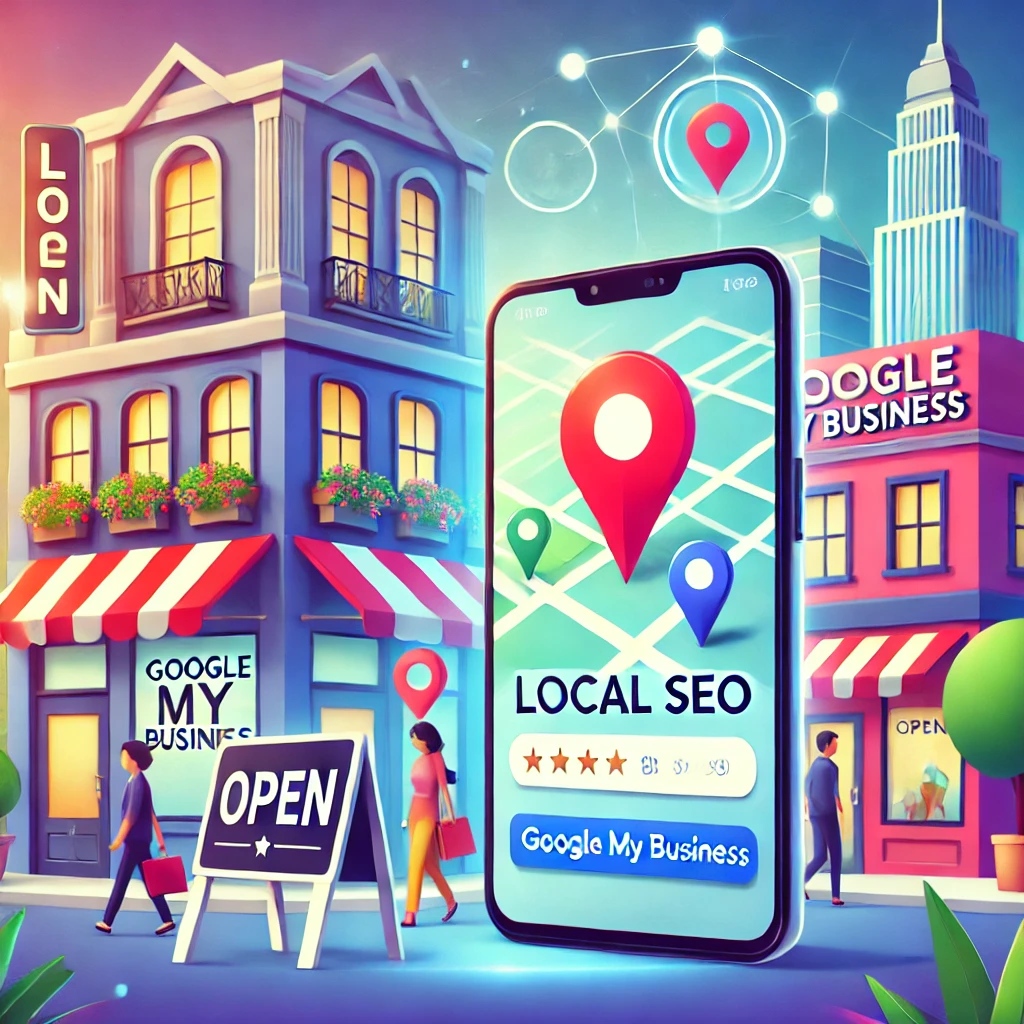In today’s digital era, the significance of Local SEO (Search Engine Optimization) for businesses cannot be overstated. Whether you run a small coffee shop or a multi-location enterprise, Local SEO can be the cornerstone of your online visibility and customer acquisition strategy. But what exactly is Local SEO, and why should you prioritize it? Let’s dive deep into the world of Local SEO to uncover its benefits, practical tips, and strategies for leveraging its power to grow your business.
What is Local SEO?
Local SEO is a digital marketing strategy that helps businesses optimize their online presence to attract more customers from relevant local searches. These searches often occur on Google and other search engines, with terms like “near me,” or specific location-based queries.
For example:
- “Best coffee shops near me”
- “Digital marketing agency in Gurugram”
Local SEO works by enhancing your online visibility in search results and maps for users within your geographical location. With the growing dependency on mobile devices, ensuring your business is prominent in local searches is no longer optional but essential.
Why is Local SEO Crucial?
1. Increased Online Visibility:
Around 46% of all Google searches are seeking local information. If your business isn’t optimized for local search, you’re missing out on a significant number of potential customers. For example, a bakery in Ujjain that appears at the top of search results is more likely to attract customers than one buried on the second or third page.
2. Builds Trust and Authority:
Appearing in local search results, especially in the Google Local Pack, enhances your credibility. Consumers are more likely to trust businesses that are prominently visible in their area. This trust translates into more inquiries, visits, and sales.
3. Higher Foot Traffic:
Studies show that 78% of location-based mobile searches result in an offline purchase. Local SEO connects online users to your physical location, ensuring that your business thrives both digitally and in person.
4. Cost-Effective Marketing:
Local SEO is one of the most affordable ways to market your business effectively. Unlike paid ads, which require constant funding, optimizing for local search provides sustainable visibility and drives long-term growth.
5. Better Customer Engagement:
By focusing on local SEO, you’re targeting a relevant audience—those who are actively searching for the services you offer. This translates into better engagement and higher chances of conversion.
Fun Fact:Did you know that businesses appearing in Google’s Local Pack get 500% more clicks than those that don’t? That’s the power of Local SEO!
Key Components of Local SEO
1. Google My Business (GMB) Optimization:
Your GMB profile acts as your business’s digital storefront. Ensure that it’s fully optimized with:
- Accurate NAP (Name, Address, Phone number)
- High-quality images
- Business hours
- Reviews and ratings
A well-maintained GMB profile significantly improves your chances of being featured in Google’s Local Pack and Maps results.
2. Local Keywords:
Incorporate location-specific keywords into your website’s content, meta descriptions, and titles.
- Example: Instead of just “real estate services,” use “real estate services in Ujjain.”
These keywords help search engines identify your relevance to local searches and improve your ranking.
3. Online Reviews:
Encourage satisfied customers to leave positive reviews on Google, Yelp, or other relevant platforms. Reviews build trust and influence local search rankings. Responding to both positive and negative reviews demonstrates your commitment to customer satisfaction.
4. Mobile Optimization:
With mobile users driving the majority of local searches, ensure that your website is mobile-friendly. A mobile-optimized site improves user experience and reduces bounce rates.
5. Local Backlinks:
Gain backlinks from authoritative local websites and government pages, like Invest India, to enhance your site’s credibility. These backlinks signal to search engines that your business is a trusted entity in the local area.
6. Structured Data Markup:
Use schema markup to provide search engines with additional details about your business, such as reviews, location, and operating hours. This enhances your chances of appearing in rich search results.
7. Local Content:
Creating location-specific blog posts or pages can boost your local relevance. For instance, “Top 10 Cafes in Gurugram” or “A Guide to the Best Markets in Ujjain” can attract and engage your local audience.
Pro Tip: Use Google’s free tools, like the Google Keyword Planner, to identify the most relevant local keywords for your business. Pair this with tools like Google Trends to stay updated on location-specific search behavior.
How to Measure the Success of Local SEO?
| Metric | Description |
|---|---|
| Local Pack Rankings | Monitor your position in Google’s Local Pack for key search terms. |
| Organic Traffic | Use Google Analytics to track the increase in local traffic to your website. |
| Conversion Rates | Measure the percentage of local visitors who take desired actions. |
| Review Scores | Keep an eye on your average rating across platforms. |
| Click-Through Rate | Track how often users click on your business link after seeing it in search results. |
Local SEO Strategies for 2024
1. Voice Search Optimization:
With the rise of voice search, optimize your content for conversational queries.
- Example: Instead of “buy pizza Ujjain,” voice users might search, “Where can I buy pizza near me?”
2. Leverage Social Media:
Engage your local audience through platforms like Instagram and Facebook. For instance, check out our agency’s Instagram page to see how we connect with our audience.
3. Engage with Local Events:
Sponsor or participate in local community events and promote them on your website and social media. This not only strengthens your local presence but also fosters community goodwill.
4. Create Location-Specific Content:
Blog about topics relevant to your area. For example, our article on digital marketing tips showcases insights tailored to regional businesses.
5. Hyperlocal Targeting:
Consider creating campaigns targeting specific neighborhoods or localities. For instance, “Best Pizza in Old Town Ujjain” appeals to a niche audience but generates highly relevant traffic.
Real-World Impact of Local SEO
Case Study: Shree Balaji Hotel
After optimizing for Local SEO:
- Increased online bookings by 60%
- Appeared in the top 3 results for “hotels near Mahakal Mandir”
- Received 200+ new customer reviews in 3 months
This example highlights how Local SEO can transform your business. Shree Balaji Hotel leveraged location-specific keywords, a well-optimized GMB profile, and customer reviews to boost its visibility and revenue.
Common Mistakes to Avoid
- Inconsistent NAP Details: Ensure your business information matches across all platforms. Discrepancies confuse search engines and lower rankings.
- Ignoring Reviews: Failing to respond to reviews can harm your reputation. Active engagement demonstrates that you value customer feedback.
- Neglecting Local Links: Avoid relying solely on generic backlinks; focus on local sources for better relevance.
- Overlooking Mobile Users: A non-mobile-friendly website can alienate a significant portion of your audience.
- Underestimating Content Quality: Generic content fails to engage audiences. Always tailor your content to resonate with local users.
Conclusion
Local SEO is no longer optional; it’s a necessity for businesses looking to thrive in a competitive market. By optimizing for local search, you’re not just enhancing visibility—you’re building trust, driving foot traffic, and creating meaningful connections with your audience. The rewards of Local SEO are immense, from increased sales to stronger community ties.
Ready to take your business to the next level? Start implementing these strategies today and watch your local customer base grow! For more insights and actionable tips, visit NewsPopHub, your trusted source for digital marketing news and updates.


